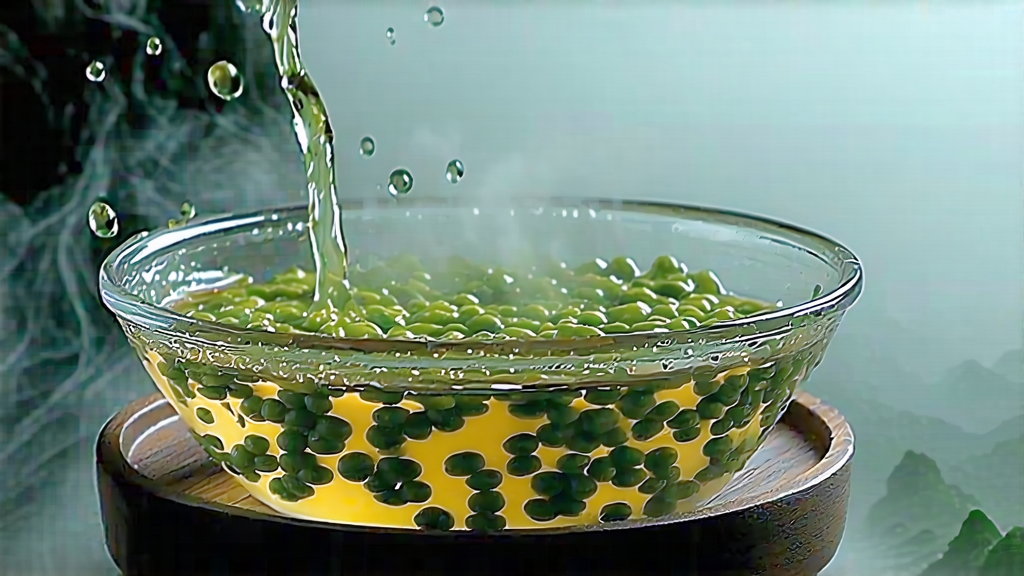
Walk into any serious tea house from Taipei to Toronto and you will sooner or later meet a compact, jade-green pellet that unfurls like a miniature fern in hot water, releasing an orchid-cream aroma that seems to hover between flower and buttered corn. That pellet is Tie Guan Yin, “Iron Goddess of Mercy,” the most travelled ambassador of Chinese oolong and arguably the cultivar that taught the world to appreciate the subtle art of partial oxidation. To understand China’s tea imagination, you must spend time with this one leaf.
A legend carved in stone and fog
The story begins in Anxi county, western Fujian, where granite peaks breathe clouds back into the sky. Local monks still recount the 18-generation tale of Wei Yin, a pious farmer who, in the chaos of the early Qing dynasty, found a rusted iron statue of Guan Yin, the Bodhisattva of Compassion, abandoned in a mountain crevice. He carried the heavy icon home, cleaned it daily, and burned incense before it without fail. One night the goddess appeared in a dream, pointing to a cave behind his hut where a single tea shrub grew out of sheer rock. “Cherish this plant,” she whispered, “and when you share its liquor, you will give people the patience I gave you.” Wei transplanted the shrub, propagated it by cuttings, and the tea soon financed a small temple whose iron bell still rings at dawn. Whether myth or marketing, the narrative encodes what every Anxi farmer knows: Tie Guan Yin is inseparable from both spiritual gratitude and geological accident.
From one mother tree to five contemporary styles
Strictly speaking, Tie Guan Yin is a cultivar—Tie Guan Yin qunti zhong—first identified in Yaoyang village around 1730. Yet the name now denotes a family of processing styles rather than a single leaf. The five expressions most often encountered today are:
- Qingxiang (light fragrance): barely 20 % oxidation, snap-frozen greenness, gardenia nose, brisk mineral finish.
- Nongxiang (traditional roast): 30 % oxidation followed by three charcoal cycles over 60 °C lychee wood, yielding cacao, toasted sesame, and a warming throat sensation.
- Yunxiang (cloud aroma): a half-roast rested in reed baskets for six months, marrying floral top notes with baked sweet potato depth.
- Chenxiang (aged): annually re-charred, brick-wrapped vintages that develop prune, sandalwood and camphor over decades, prized in Chaoshan teahouses as a digestive.
- Zhengwei (original terroir): micro-lots harvested from the 800–1 000 m granite belts of Xianghua, Gande and Longjuan, where diurnal swings of 10 °C lock in succinic acid, giving a cooling, almost electric finish that connoisseurs call “mountain rhyme.”
Each style begins with the same leaf—oval, thick, the edge serrated like a Confucian scholar’s sleeve—but ends as a different poem.
The craft: when green becomes half-green
Pickers climb before 7 a.m. while dew still pearls on the three open leaves and one dormant bud that constitute the ideal plucking standard. The baskets must reach the factory by 10 a.m.; any delay and the leaf’s internal carotenoids convert too fast, flattening aroma. Inside the shed, the leaves are first “waved”—tossed vertically in bamboo drums rotating at 18 rpm for exactly three minutes—bruising the margins while keeping the veins intact. This controlled wounding triggers oxidation enzymes, yet the core stays green, creating the half-green, half-red signature of oolong.
Next comes the most watched 12 hours in tea making. Every 45 minutes the leaves are spread on round rattan trays and shaken by hand with a wrist motion known as yaoqing, “rocking the green.” Masters read the leaf like a pulse: when the edge turns chestnut but the center still springs back under a thumb, oxidation is arrested. A 280 °C tumble for 90 seconds fixes the aroma, followed by 40 minutes of rolling under cotton cloth to twist the leaf into the trademark pellet. Finally the tea is baked, rested, rebaked, and rested again—cycles that can stretch across two lunar months—until moisture drops below 4 % and the pellet clicks like a bead against porcelain.
Tasting the mountain rhyme
Professional cupping in